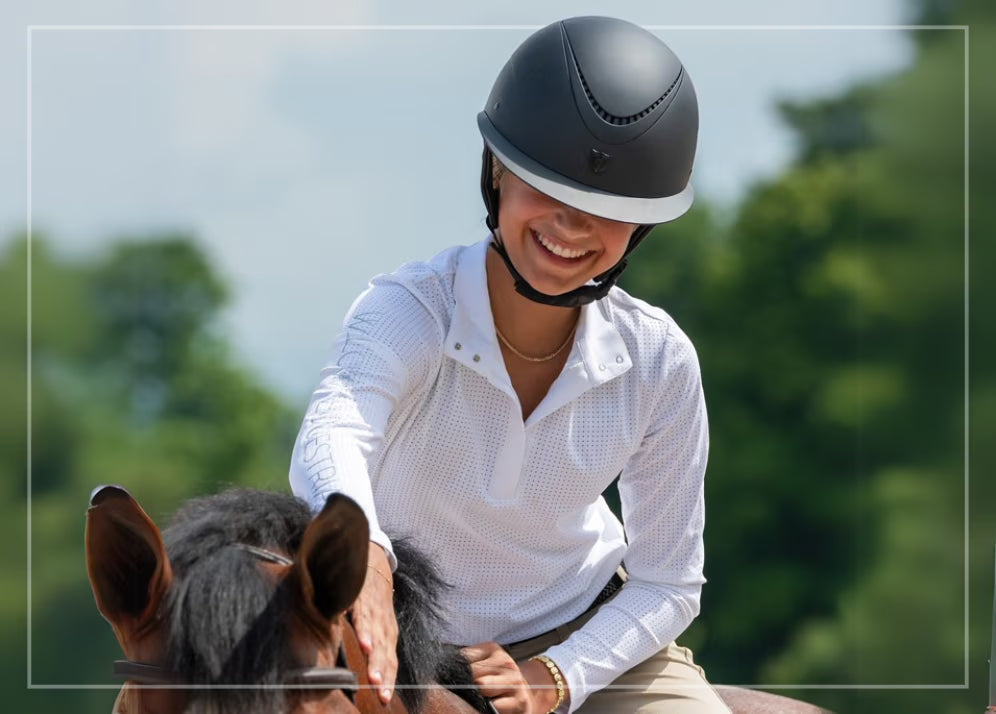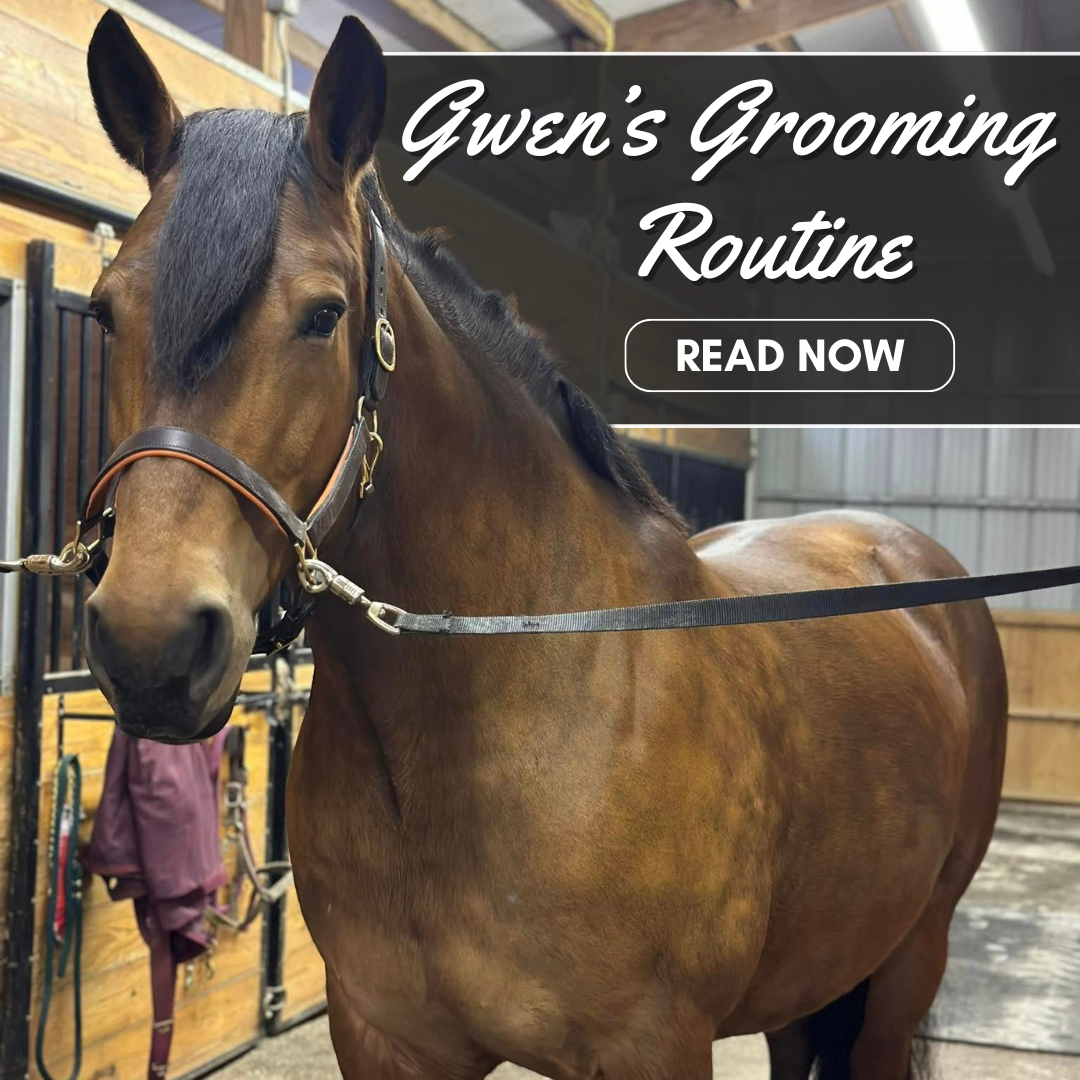September 15th, 2025
How to Choose & Fit a Riding Helmet
Riding helmets play a vital role in protecting equestrians from serious injury. In fact, wearing a helmet can reduce horse-related fatal head injuries by up to 70–80%. Whether you're a first-time rider or upgrading your current helmet, this guide will help you measure, choose, and properly fit a riding helmet for optimal safety and comfort.
Equus Now! offers in-store helmet fittings and personalized advice, so you can be confident you're choosing the right helmet for your head shape, riding style, and comfort needs.
Why Helmet Safety Matters
No matter your riding level or discipline, the most important factor in choosing a helmet is safety certification. Helmets should meet ASTM/SEI standards, meaning they’ve been rigorously tested to protect you in the event of a fall or impact. Some helmets even offer MIPS (Multi-directional Impact Protection System), which adds an extra layer of defense by helping reduce rotational forces on the brain during angled impacts.
When shopping, prioritize helmets that are certified and consider features like dial-fit systems, crash replacement programs, and optional technologies like MIPS. These features not only improve protection but can also enhance comfort and fit.
When to Replace Your Helmet
Even the best helmets don’t last forever. Helmets should be replaced every 3 to 5 years, depending on how often you ride and how the helmet has been stored. Sweat, heat, and general wear can degrade the materials inside - even if everything looks fine on the outside.
If your helmet has been in a fall, shows cracks or dents, or is simply older than recommended by the manufacturer, it’s time for a replacement. When in doubt, replacing is always the safer choice.
What is MIPS, and Do You Need It?
MIPS (short for Multi-directional Impact Protection System) is a technology designed to help reduce the risk of brain injury caused by rotational forces during a fall. Inside the helmet, a thin low-friction layer allows the helmet to move slightly upon impact, helping redirect forces away from your brain.
The best part? MIPS technology adds almost no noticeable weight - just 25 to 45 grams - and is built into a variety of helmets across different price points and styles. While not required, many riders choose MIPS-equipped helmets for the added peace of mind, especially if they ride in fast-paced or higher-risk environments.
Finding the Right Helmet Fit
Fit is just as important as certification. Even the safest helmet can’t protect you if it doesn’t sit correctly on your head.
Start by identifying your head shape. If your head looks roughly the same front-to-back as it does side-to-side, you likely have a round head. If it’s longer front-to-back, your head is more oval-shaped. Knowing this will help you narrow down brands and styles, as some helmets are better suited for round heads and others for oval. Some brands, like One K, even offer models designed for both round and long oval heads.
Once you know your shape, measure the circumference of your head. Use a soft measuring tape, or a piece of string and a ruler, and measure about an inch above your eyebrows, around the widest part of the back of your head. Match your measurement to the helmet brand’s size chart - some use inches or centimeters, while others use general sizes like Small, Medium, or Large.
Trying On Your Helmet
When your helmet arrives, try it on before removing any tags or stickers. It should feel snug - but not uncomfortable - right from the start. A properly fitted helmet will sit level on your head, just above your eyebrows, and shouldn’t shift forward, backward, or side to side when you move.
A simple way to check the fit is by gently wiggling the brim. If your eyebrows move with it, the helmet is snug enough. The chin strap should allow space for just one finger between the strap and your chin, and the “Y” where the straps meet should rest just below your earlobe.
Not quite sure it fits right? That’s where we come in. Equus Now! offers in-store helmet fittings and personalized advice, so you can be confident you're choosing the right helmet for your head shape, riding style, and comfort needs. If you're shopping online, our team is also happy to provide guidance remotely - just give us a call or send us a message.
Signs Your Helmet Doesn’t Fit Properly
Some common signs of poor fit include pressure points or movement. If you feel tightness at your forehead and the back of your head, you’re probably trying to fit an oval-shaped head into a round-shaped helmet. Pressure on the sides above your ears suggests the opposite. If the helmet feels like it’s “perching” or sitting too high, it could be too small or not deep enough for your head shape. If it covers your eyebrows and pushes on your ears, it’s likely too big or too deep.
Helmet Care and Maintenance
Once you’ve found the perfect helmet, keeping it in top condition is important. Store it in a helmet bag or padded backpack to prevent scratches or cracks, and try to keep it in a temperature-controlled space - extreme heat or cold can warp materials and shorten its lifespan.
After each ride, allow your helmet to air out, especially if it’s been exposed to sweat. Some helmets come with removable liners you can hand wash. For those that don’t, use helmet-safe sprays to clean and deodorize the interior. Never put your helmet in a dishwasher or washing machine, as this can compromise the protective materials inside.
It’s also a good idea to check your helmet’s fit from time to time. Padding can compress with use, especially if you ride daily or sweat heavily.
Need Help Choosing?
If you're still not sure which helmet is right for you, don’t worry - we’re here to help. Our team is available to answer questions and guide you to the best fit for your head shape, discipline, and riding needs.
Also, don’t miss out on our annual Safety Awareness Week sale - an excellent time to upgrade your helmet at a great price.





